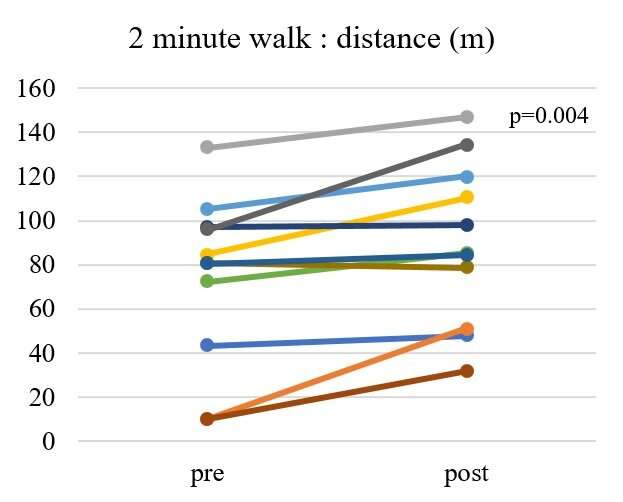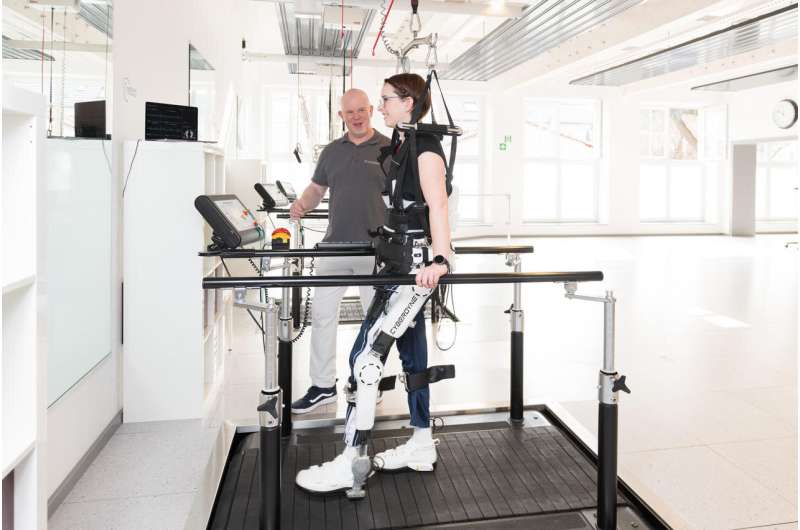Hybrid Assistive Limb improves gait ability in patients with ALS

Amyotrophic lateral sclerosis (ALS) is a fatal progressive neurodegenerative disease that presents with various symptoms, such as muscle weakness, dysphagia, dysarthria, and respiratory failure, leading to death in 3–5 years. Although riluzole and edaravone are the only approved drugs available for ALS, they do not improve muscle weakness or atrophy, and therefore make it difficult for the patients to acknowledge the effect. As ALS remains incurable, patient care including rehabilitation, is important for maintaining the physical function and quality of life (QOL) during the rapid progression of the disease.
The Hybrid Assistive Limb (HAL) is the world's first cyborg-type wearable robot that supports gait training based on the wearer's intended motion. HAL is based on a new technology called "cybernics," in which the machine and human are connected and share information in real time, allowing the machine to support the voluntary movement of the wearer. HAL detects bioelectrical signals on the skin surface and provides support to the wearer's voluntary drive.
Professor Kano Osamu, M.D., Ph.D. and his colleagues conducted a study to evaluate the effect of HAL-based training in ALS patients. Patients who were diagnosed with ALS at Toho University Omori Medical Center between January to December 2019 and had an unsteady gait with the ability to walk for >10 m with assistance from caregivers and/or a walker were included. The gait training program consisted of one session per day (20–40 minutes per session), 2–3 days a week for at least 4 weeks. As a result, the distance of the 2-minute walk test improved, on average, from 73.87 m to 89.94 m after one course of training. Other outcome measures also showed some improvement or preservation.
"Our results show that cybernic therapy improves gait ability in ALS patients in a short period. This also suggests that continuous cybernic therapy may be able to suppress the progression of ALS and maintain QOL," said Prof. Kano, senior author of the study.

These results were published online in Journal of Clinical Neuroscience .
More information: Harumi Morioka et al, Robot-assisted training using hybrid assistive limb ameliorates gait ability in patients with amyotrophic lateral sclerosis, Journal of Clinical Neuroscience (2022). DOI: 10.1016/j.jocn.2022.02.032




















